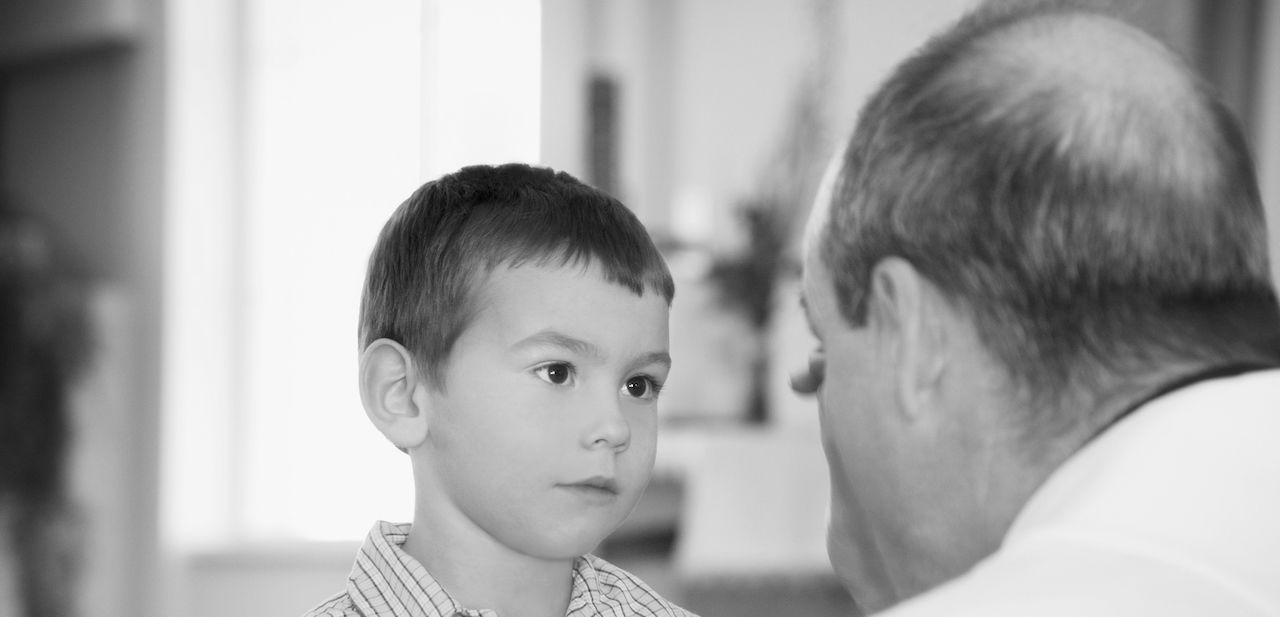Highlights
The older I get, the more I realize how much I resemble my parents. My dad was raised during the Great Depression; for quite a while, I have understood why I get angry when my daughters waste food. But I didn’t understand why I was so much more uptight than my husband when shepherding our preschoolers across parking lots until I saw my parents doing it “my way” when we vacationed with them in Toronto last month.
My parents have been married for 56 years. I am the product of their union, their parenting, and their grandparenting. When scholars began studying the transmission of behavior across generations, most children were raised in stable, two-parent homes. Today’s families are more complex. My best friend from college attended church with her never-married boyfriend and his son; the son didn’t attend every other Sunday when he was with his mother and stepfather (and older half-sister from his mother’s previous union and younger half-sister born to his mother and stepfather). Whose behavior will be transmitted to that boy?
Some of today’s families are so complex that it hardly seems worth trying to figure it out. But others that are more complex than my parents’ family present some interesting questions that Matthijs Kalmijn recently took up in Demography. Kalmijn uses differences in coresident fathers’ influence, absent fathers’ influence, and stepfathers’ influence to help sort out what is nature and what is nurture. He does this by investigating the transmission of educational attainment from parents to children and the transmission of church attendance from parents to children in the same study. The idea is that cognitive ability has a sizable genetic component while church attendance is based on norms, values, and preferences, but not genetics. Even though there is some evidence of a “God gene,” Kalmijn seems to be on safe ground when he argues that education has a bigger genetic component than churchgoing does.
For children’s educational outcomes, he found that divorced, nonresident biological fathers influenced children’s education more than stepfathers did. He believes this supports the theory that genetics matters more than socialization in educational attainment. For church attendance, the basic pattern was different: stepfathers had greater influence on children’s church attendance in adulthood than divorced, nonresident fathers. He argued that socialization late in childhood (by stepfathers) mattered more for church attendance than socialization early in childhood (by biological fathers, prior to divorce).
There are many complex statistical issues involved in a study like this one, and Kalmijn handled them well enough to get published in a top-tier journal like Demography. Nonetheless, I think two of his assumptions are suspect enough to be worth highlighting.
The first is that he assumes divorced, noncoresident fathers and stepfathers have approximately equal opportunities to socialize children because on average the years of coresidence from childbirth to divorce are about the same as the years from remarriage until children reach adulthood. Kalmijn acknowledges that with better data than were available to him, the underlying role of duration of exposure could be tested directly, but he doesn’t acknowledge that he implicitly assumes non-coresident fathers do not interact with their kids. Some divorced parents see their children every week; some live with their children part of the week, others part of the year, others not at all. Kalmijn used data on the family arrangement that characterized the biggest chunk of time in childhood. Some divorced parents never even send their kids a birthday card, but it seems unreasonable on average to equate years living with the mother and amount of socialization contributed by the father. And yet that is key to his interpretation: he assumes that the socialization contributed by divorced, noncoresident fathers and stepfathers is the same, so differences in educational outcomes are likely to be genetic (he handles the role of resources well).
The second questionable assumption is that the influence of stepfathers might be overestimated to the extent that women match with the same kind of guy the second time as they did the first time. The story for education is fairly straightforward, and I agree with his approach: Kalmijn shows that even a fairly large degree of positive correlation would not alter his substantive results.
But he uses the same approach for church attendance. Here we have to take very seriously the fact that church attendance is not just about norms, values, and preferences, but also about doctrine and expectations. If couple marries, worships, and raises their children in a church that preaches marital fidelity—as most churches do—and then the husband leaves his entire family for a mistress, the woman might distrust the whole institution’s influence on family life. She might not care whether she marries in the faith the second time around. Or maybe she doesn’t become disillusioned, but finds herself stigmatized as a divorcée or simply has limited social opportunities within the church as an older single. In any of these cases, she might repartner with someone who attends church less.
It could easily work the other way, too. If a woman was in a liberal, open marriage that broke up, she might decide that a more traditional path could be worth trying: she might repartner with a churchgoer. My statistical point is that the correlation between fathers and stepfathers doesn’t have to be positive. Kalmijn shows that stepfathers influence adult churchgoing more than divorced biological fathers do, even when accounting for the fact that women would likely choose someone with the same churchgoing pattern both times. Stepfathers would be even more influential than he estimates if divorce changed what women were looking for in a man with respect to church attendance.
In other words, I think he’s fallen far short of substantiating the interpretations he gives to his results. Nonetheless, it seems likely that divorce and remarriage will in fact alter patterns of how behaviors are transmitted across generations. Work that begins to investigate how is welcome.
















